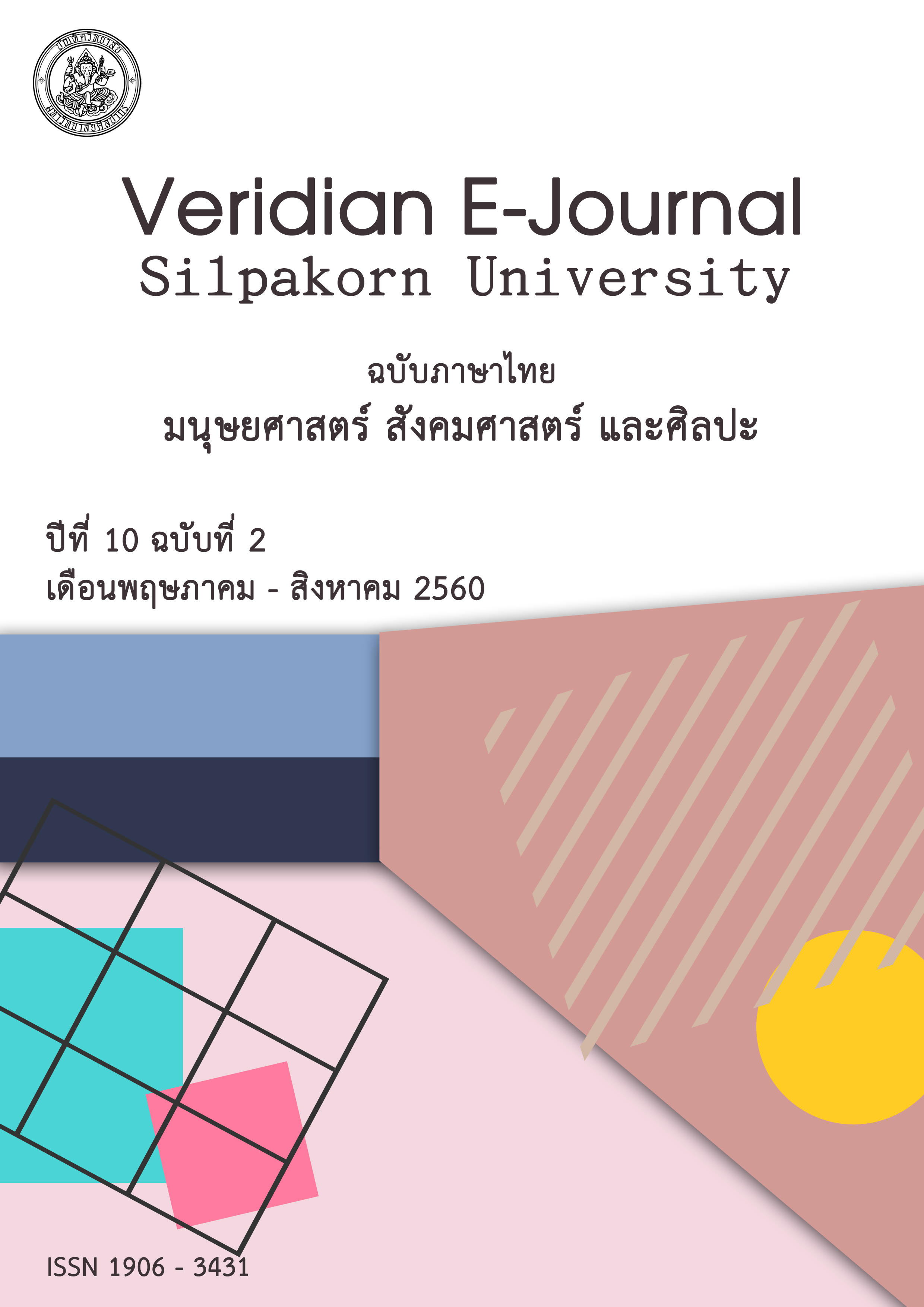รูปแบบการจัดการศึกษาที่มีประสิทธิผลสำหรับโรงเรียนสาธิต
Main Article Content
Abstract
งานวิจัยนี้เป็นการวิจัยเชิงคุณภาพ มีวัตถุประสงค์เพื่อศึกษารูปแบบการจัดการศึกษาของโรงเรียนสาธิตที่เกิดประสิทธิผล การวิจัยครั้งนี้อาศัยกระบวนการอธิบายปรากฏการณ์ (Phenomenon) โดยผ่านการถอดบทเรียนภายใต้หลักการประสิทธิผลขององค์การของ Florence Heffron,1989 ใน 4 มิติ คือ1) มิติของการกำหนดเป้าหมาย(Goal Attainment) 2) มิติการบริหารจัดการที่เป็นระบบ(Systematic Approach) 3) มิติของผู้มีส่วนได้เสีย (Stakeholder Approach) 4) มิติการนิยมชื่นชอบเห็นคุณค่า(Competing Value Approach) โดยใช้การสัมภาษณ์ผู้ให้ข้อมูล (Key Informant) จากโรงเรียนสาธิต 5 แห่งที่เป็นโรงเรียน Best Practice : BP ภายใต้เกณฑ์การพิจารณาตามหลักการของ Florence Heffron ทั้งนี้ผู้วิจัยได้ใช้วิธีการตรวจสอบเครื่องมือแบบสามเส้า(Triangulation) ได้แก่ บุคล เวลา สถานที่ เพื่อยืนยันความเที่ยงตรงของข้อมูล โดยดูเนื้อหาทางด้านบริหารวิชาการ ด้านบริหารการบุคคล ด้านการบริหารงบประมาณ สำหรับหน่วยที่ศึกษา (Unit of Analysis)ของการศึกษา 5 โรงเรียนBest Practice นี้จะได้ผู้ให้ข้อมูลจำนวน 15 คน (โรงเรียนละ 3 คน ได้แก่ผู้อำนวยการ รองวิชาการ และครู)
ผลการศึกษาพบว่า รูปแบบการจัดการศึกษาที่มีประสิทธิผลสำหรับโรงเรียนสาธิต สู่ความเป็นเลิศ มีประสิทธิผล ประกอบด้วย 4 ด้าน โดยให้ความสำคัญต่อด้านต่างๆ ได้แก่ 1) ด้านการจัดการศึกษาที่เน้นวิชาการด้านหลักสูตรที่เน้นความเป็นเลิศสู่มาตรฐานและสากล มีการพัฒนาด้านกระบวนการเรียนรู้ ที่มีทักษะด้านภาษา คณิตศาสตร์ วิทยาศาสตร์ เทคโนโลยี และประสบการณ์ชีวิต 2) ด้านการบริหารงบประมาณเพื่อให้เกิดคุณภาพที่ดีต่อผู้เรียน จำเป็นต้องมีวิธีการจัดการอย่างเป็นระบบ 3) ด้านการบริหารงานบุคคล ต้องให้ความสำคัญกับการวางแผนกำลังคนด้วยวิธีการมีส่วนร่วมของครูและบุคคลากรในโรงเรียนทั้งในส่วนการสรรหาคัดเลือกบุคคลากร พัฒนาและส่งเสริมคุณภาพบุคลากร รวมถึงการส่งเสริมให้เข้ารับการอบรม ศึกษาต่อ รวมไปถึงส่งเสริมให้มีการทำวิจัย 4) ด้านการบริหารงานทั่วไปของโรงเรียนสาธิต ประการสำคัญยิ่งของการบริหารงานทั่วไปจะต้องเป็นแหล่งปฏิบัติงานเรียนรู้ฝึกฝน ฝึกหัดผู้ที่จะประกอบวิชาชีพครู จากคณะศึกษาศาสตร์ คุรุศาสตร์
This is a qualitative research, aims to study the model of education management for Demonstration School. The methodology of this research was to explain the phenomenon using dissemination from the lessons using effectiveness principle of the organization of Florence Heffron, 1989 in 4 dimensions: 1) Goal Attainment 2) Systematic Approach 3) Stakeholder Approach 4) Competing Value Approach. The key informant was obtained from an interviewing the representatives from Five best-practice Demonstration Schools. Florence Heffron principle was applied for the school selection. Triangulation method, considering personnel, time and place, was used to confirm the precision of the interviewed data. Three main parts from all five best-practice schools were considered, which are Academic, Personnel and Financial Administration. There were total of fifteen representatives, who are Director, Deputy Director for Academic Affair and teacher from each school, giving those information.
The research showed that the Effectiveness of Educational Management Model for Demonstration school that lead to the excellence and effectiveness consists of four parts. The four important areas includes Academic management, Budget Management, Personel Management and General Management of the school. For the academic management, the international standard curriculum is emphasized. The development of Learning processes in Linguistic, Mathematics, Science and Life Experience was also focused. Moreover, systematic budget management was found to be necessary for quality of students. For the personel management, teacher and all officers participation was significantly important for workforce planning. This must be applied to personel recruitment and development in terms of support in training, higher qualification and research. Finally, Demonstation School must be the place for training or inturnship for the students from Faculty of Education.

